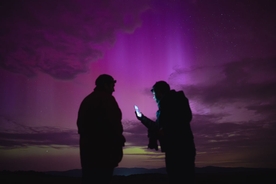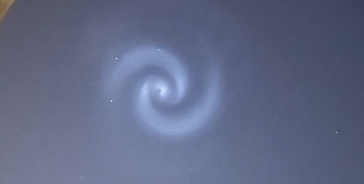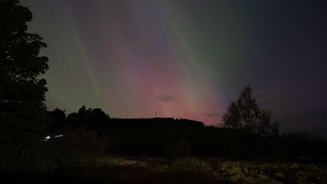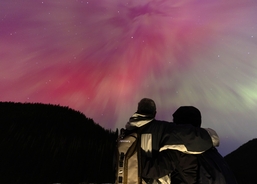We're rapidly evolving into a species whose eyes are glued to their phones, feeding an insatiable hunger for trivial information and navel-gazing selfies. But if you look up once in a while, you might see something incredible in the natural world: the aurora borealis, a super blood wolf moon, or rare, wave-shaped clouds.
Virginia resident Amy Hunter gazed into the sky above Smith Mountain on Monday evening and spotted clouds in a very peculiar shape. They formed perfect crests, tumbling through the air like waves. Hunter snapped a photo of the mesmerizing sight, and shared it with a Facebook group for Smith Mountain enthusiasts.
The image went viral, with many people commenting they had never seen such a phenomenon before. What's the deal with these wave-like clouds? Is it a sign from Zeus that we should abandon land, sail off into the ocean and become pirates? Well, don't buy an eyepatch and peg leg just yet. It turns out there's a scientific explanation.
The clouds formed Kelvin-Helmholtz waves, which are named after the physicists who studied them, Lord Kelvin and Hermann von Helmholtz. The Kelvin-Helmholtz instability forms when there’s a velocity difference across the interface between two air densities, like wind blowing over water, according to EarthSky.org.
According to EarthSky, it's widely believed that Kelvin-Helmholtz waves inspired Van Gogh's 1889 panting Starry Night. If true, what a hack! I thought he made those up. But he just copied them out of the sky? That's plagiarism. Didn't even give the sky credit. No wonder he died penniless!
Anyway, the point is, if you look up from your phone once in a while, you might witness an incredible phenomenon. Then again, you could just google aurora borealis, super blood wolf moon, and Kelvin-Helmholtz wave clouds. That would be more convenient than looking up at the sky randomly and hoping to see something cool. Hmm...
The lesson is, never ever take your eyes off your phone. Ever.





